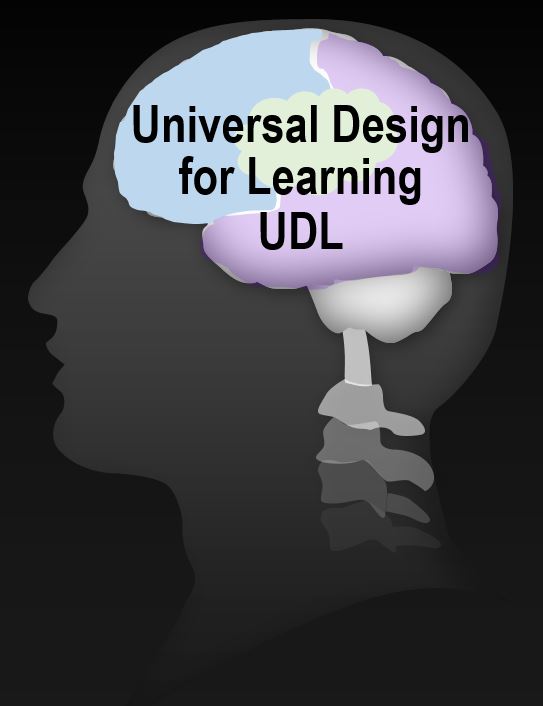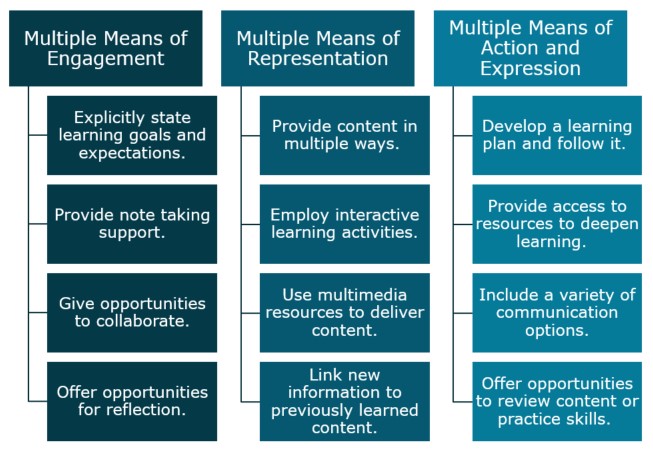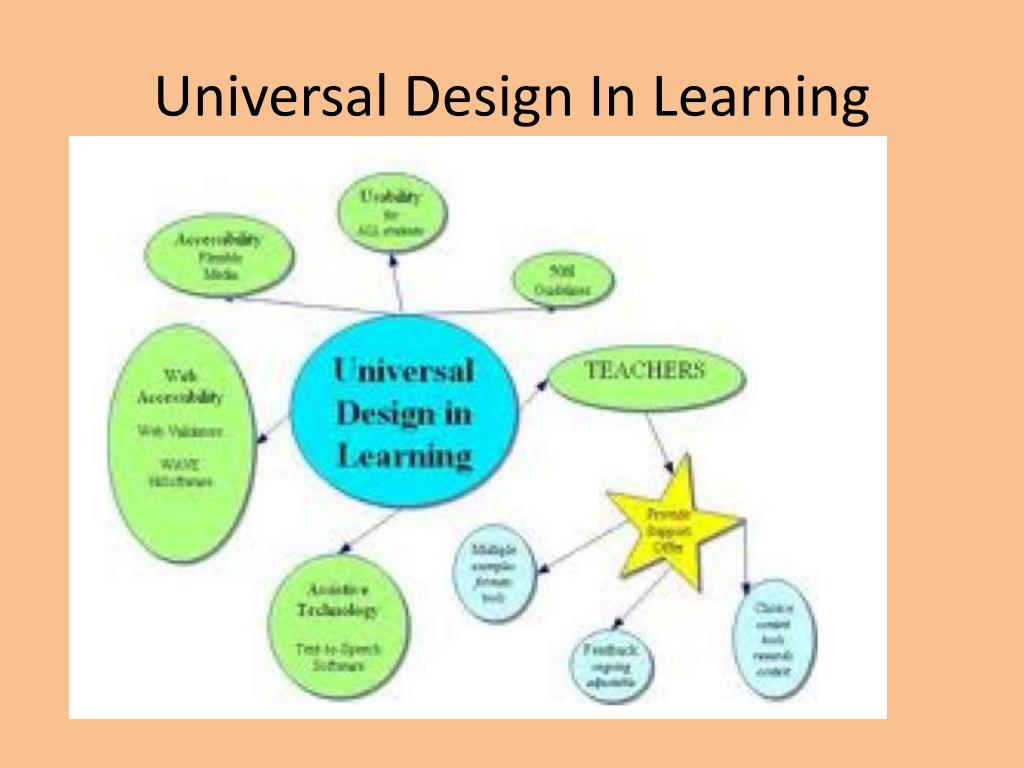Table Of Content

This means allowing students to share their ideas and providing them with feedback. For example, you might give students a forum to discuss class topics or ask them to contribute ideas for assignments. If a student needs accommodation to participate in the learning process, you can provide that accommodation through UDL. For example, you might allow a student to use a laptop if they cannot write by hand or give a student an alternate format for reading class material. UDLA has technical assistance to support implementation, including guidance on communication plans and how to engage stakeholders in a universally designed way.
Closing Gaps for Students With Disabilities
Universal Design for Learning (UDL) is a framework developed by CAST, an Understood founding partner. UDL guides the design of learning experiences to proactively meet the needs of all learners. When you use UDL, you assume that barriers to learning are in the design of the environment, not in the student.
Bringing universal design to the classroom
For example, learners may listen to audio while they look at a code or notation, until they gain enough knowledge to use only the notation. Similarly, learners may benefit from Braille and audio at the same time, such as through a screen reader and Braille display. However, learners should later gain the skill to read Braille without audio support. You may want to consider using UDL if you are looking for ways to differentiate instruction, offer multiple means of expression, provide accommodations, and promote inclusivity.
Universal Design for Learning Guidelines
It acknowledges the vast diversity within the U.S. higher education system, including students of multifarious language backgrounds and those with disabilities. The keystone of UDL is its guidelines, which provide educators with concrete strategies to implement this adaptive approach across all disciplines. UDL's goal is to create learning environments that are accessible and equitable, negating the need for further modifications or adaptations, thereby fostering an inclusive educational atmosphere. This approach to teaching doesn’t specifically target kids with learning and attention issues.
Why are there multiple versions of the Guidelines?
Providing professional development on UDL in a standardized, one-size-fits-all format is incongruous with what is expected from teachers, for example. If teachers are expected to provide multiple means of engagement, representation, and expression in the planning and delivery of instruction, then the PD provided to them should do the same. Provide extensive professional development in UDL for teachers and administrators.
Finally, the “internalize” row includes the guidelines that suggest ways to empower learners through self-regulation, comprehension, and executive function. Series from the EDUCAUSE Learning Initiative (ELI) provides concise information on emerging learning technologies. Each brief focuses on a single technology and describes what it is, where it is going, and why it matters to teaching and learning. For example, if your students typically struggle with a new concept after you present it, you could make a short video recording of key ideas.
Provide Multiple Means of Action and Expression
Universal Design for Learning - San Diego County Office of Education
Universal Design for Learning.
Posted: Mon, 10 Jul 2023 21:40:09 GMT [source]
For instance, English and history use writing rather than symbols or notation. Nevertheless, written language is also inaccessible to some learners, such as those with dyslexia or other learning disabilities. Universal Design for Learning (UDL) is a framework that guides practitioners to create and develop learning environments, curricula, and assessment tools to accommodate diverse learners. Universal Design for Learning (UDL) is a framework for increasing access to education environments and opportunities, including in infant and toddler settings. Learning environments, materials, and activities are planned ahead of time, with the aim of welcoming all learners.

Accessible Text Formats

It is an instructional design model which aims to make content accessible and engaging for all learners. UDL recognizes the diversity of students’ intelligence, interests, learning styles, prior knowledge, language skills, and physical abilities. Special educators are often spread thin, and models for successful collaboration, such as co-teaching, are resource-intensive and often unrealistic to expect in traditional schools. UDL offers a framework for successful collaboration between general and special education teachers that benefits all students. Embodied in the mission of UDL is the goal to dismantle learning barriers for all, particularly for students with disabilities.
Implementation initiatives in the US
Make sure that there are options regularly available for any student to use as needed. Explain at back-to-school night or in a class email that you’ll be using Universal Design for Learning. You can even share a family-friendly article about the UDL approach to teaching.
As a teacher, one of the best ways to help students is by reducing barriers to learning. One approach that can help you achieve this is the Universal Design for Learning. Universal Design for Learning (UDL) is an approach to teaching and learning that gives all students equal opportunity to succeed. The room is laid out with different spaces for different kinds of work — quiet, individual work, small and large group work, and group instruction. The teacher moves around from space to space, helping students as they work.
A pivot towards UDL means instructional goals, methods, materials, and assessments are not fixed but instead adaptable. This flexibility promotes equal opportunities for all students, removing barriers that often hinder the learning process, particularly for students with disabilities. UDL is a framework to guide the design of learning environments that are accessible and challenging for all. Ultimately, the goal of UDL is to support learners to become “expert learners” who are, each in their own way, purposeful and motivated, resourceful and knowledgeable, and strategic and goal driven. UDL aims to change the design of the environment rather than to change the learner. When environments are intentionally designed to reduce barriers, all learners can engage in rigorous, meaningful learning.
UDL is similar to universal instructional design and universal design for instruction. All three advocate for accessible and inclusive instructional approaches that meet the needs and abilities of all learners. Find out how the UDL framework guides the design of instructional goals, assessments, methods, and materials that can be customized and adjusted to meet individual needs. One of the simplest ways to implement UDL is to offer multiple pathways to learning.

No comments:
Post a Comment